Best Crappie Baits & Lures to Catch Your Next Slab
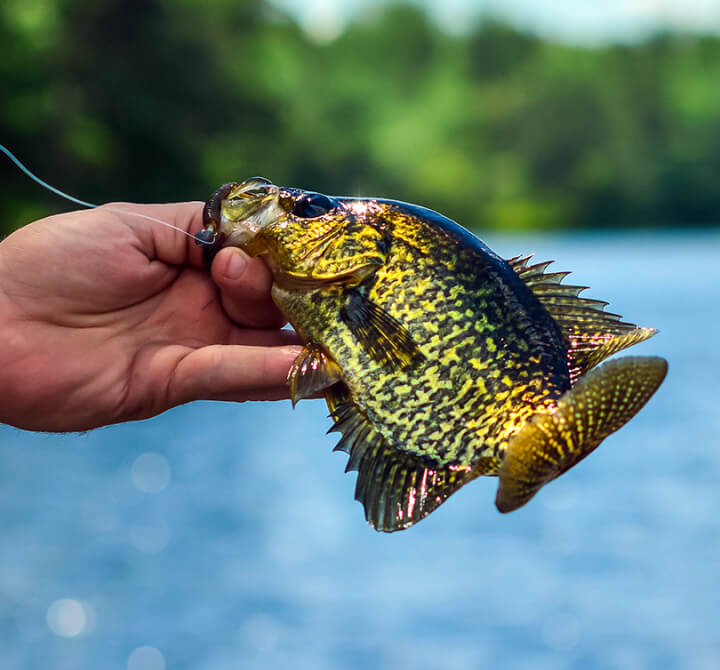
Fishing for crappie makes for an exciting day on the water and a delicious dinner for later! But before you can have all that fun catching the perfect fish, you need to know what the best crappie baits and lures are. In this guide, you'll learn all about a crappies:
- What are crappies? They're a beloved freshwater fish found in the United States.
- What do crappies eat? Crappies eat anything from larvae, aquatic insects, baitfish, worms, and crustaceans.
- What are the best live baits for crappies? Crappies love to hunt shad, minnows, shrimp, and crayfish.
- What are the best artificial lures for crappies? If you're just getting started with crappie angling, consider using a spinnerbait, soft plastic, and jig lure. These mimic their favorite live bait the most!
- What's the best crappie bait to use by season? Soft plastics, jigs, and spoons are each great year-round options.
- What's the difference between white crappies vs black crappies? They have different body markings + patterns, a number of dorsal spines, mouth shapes + sizes, as well as different body shapes + sizes.
What Are Crappies?
Crappies are part of the sunfish family and are one of the most popular freshwater fish in the United States — found in the 48 contiguous states. You may also hear them referred to by other names like speckled bass, calico bass, or even strawberry bass.
- They have spines on their gill covers and prefer warm waters.
- Crappies can be split into two main species: white crappie and black crappie.
- Although native to eastern North America, you can now find them almost everywhere in the U.S.
- They often swim around sheltered areas in freshwater lakes for protection from predators and to have easy access to food.
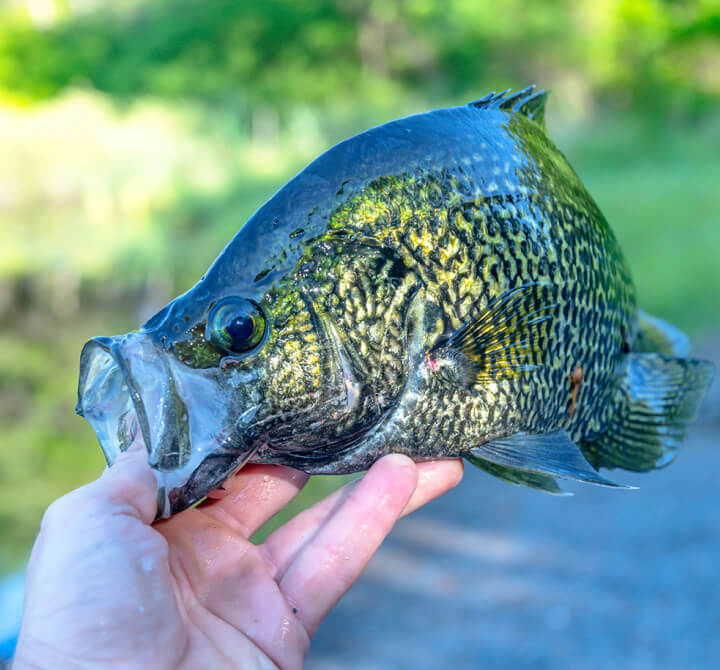
What Do Crappies Eat?
Crappies love small fish like shad! They tend to eat at dusk or dawn and rarely feed during the day. There are a few important differences between what live bait white crappie and black crappie eat.
- Best Live Bait for White Crappie: White crappies usually eat more fish, insects, worms, and crustaceans than black crappies. Find them hunting shad or minnows in murky water.
- Best Live Bait for Black Crappie: Black crappies do love to eat minnows, but a huge portion of their diet actually depends on invertebrates, zooplankton (including planktonic crustaceans), and nocturnal larvae. Find them hunting at night in clear, cool water!
Expert Tip:
Want to know the best artificial lures that mimic their favorite meals? Popular types of artificial lures for crappies are jigs, spoons, plugs, small tubes, spinner baits, and crankbaits.
Best Live Bait for Crappie
Crappies are usually eager to bite with the right bait on your hook! Live bait helps to entice them even more. They're less expensive than other options, so you can stock up without breaking the bank.
| Best Crappie Baits & Lures Guide | ||||
|---|---|---|---|---|
| Name | Time Most Active | Spring/Fall Water Depth | Summer/Winter Water Depth | Best Lure To Mimic Bait |
| Shad | Dusk | Shallow | Deep | Spinnerbait |
| Minnows | Daytime | Shallow | Shallow | Spinnerbait |
| Shrimp | Mostly during the night; occasionally during daytime | Deep | Shallow | Soft plastic |
| Crayfish | Nighttime | Shallow | Shallow | Jigs |
Types of Crappie Baitfish
- Minnows — One of the best live baits for catching crappies, they are delicate and defenseless but can last a while when properly stored. Buy or catch minnows, then present them under a float or on a bottom rig.
- Shrimp — Freshwater shrimp (or grass shrimp) are a popular natural food source for crappies in the southern U.S. They make a good bait choice, too! Keep them alive for the best results.
- Crayfish — As crappies grow from youth to adulthood, they tend to eat fewer insects and crayfish in favor of more baitfish. However, younger crappies still eat crayfish often. They're best to use in summer and winter since they're a natural food source and are one of the main sources available in those seasons.
Best Artificial Lures for Crappies
Many anglers swear by artificial lures for their best results. Crappies bite artificial lures during summer. But they most aggressively chase them down in the fall when they're fattening up for winter. Use a variety of artificial lures with fantastic success — just make sure they're on the smaller side and mimic their natural prey!
Best Crappie Jig: Strike King Mr. Crappie Swim Jig
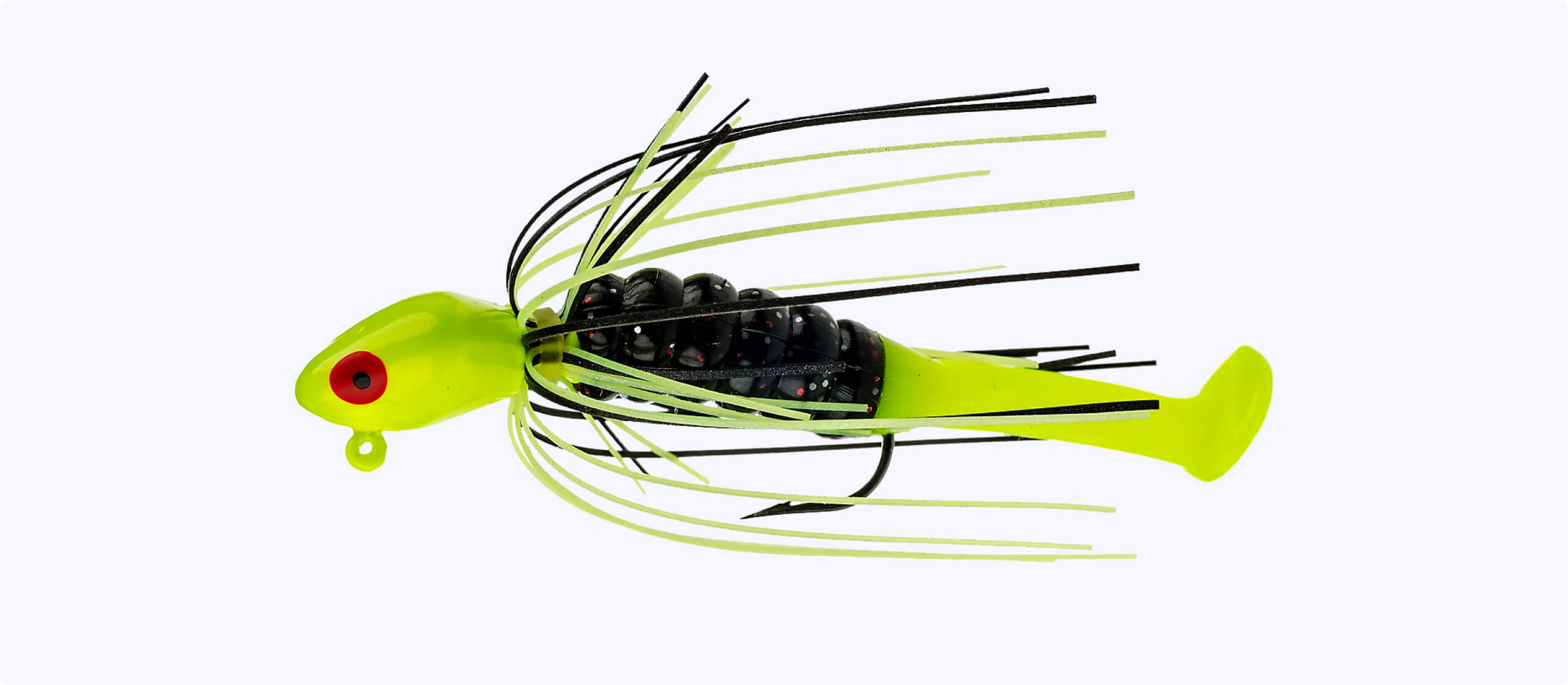
Why We Chose It: This swim jig is great for targeting freshwater panfish with its micro skirt and spear-shaped head that create realistic action in heavy cover and grass.
How to Use This: Swim it through vegetation in spring when the crappies are shallow and spawning.
Key Features:
- Spear-shaped head penetrates through heavy cover and grass
- Micro skirt offers lots of action
- Single #1 hook
- 2.5 inches long, 1/4 ounce
Best Crappie Tube Lure: Strike King Mr. Crappie Tube Baits
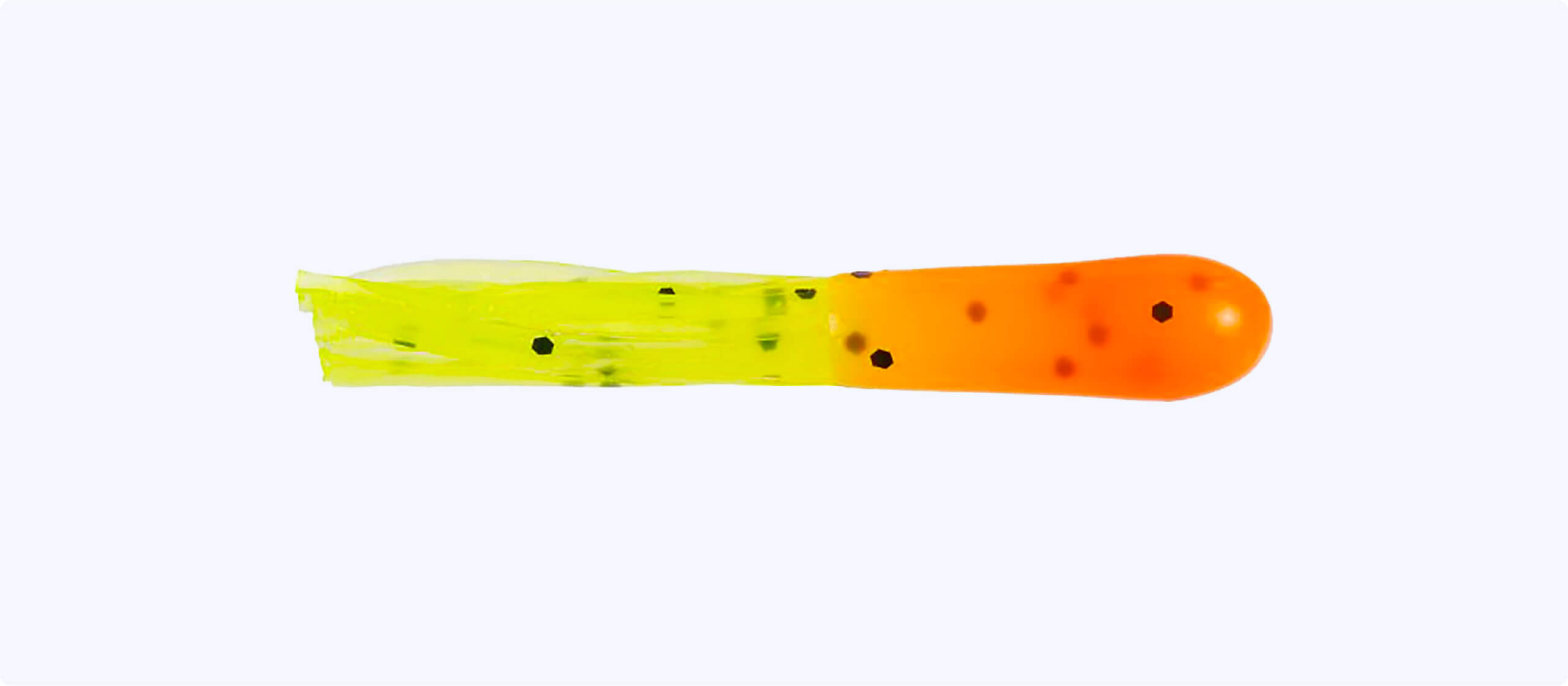
Why We Chose It: This 10-pack of baits offers a natural shape for a realistic-looking design and is suitable for freshwater use.
How to Use This: Pair it with lighter jig heads for shallow crappie or heavier jig heads for deeper crappie. Cast it out and simply let it fall slowly into the strike zone. Most strikes will come as the tube falls, so watch your line closely.
Key Features:
- Made from plastic for long-lasting use
- Natural shape offers a lifelike appearance
- 2 inches long
Best Crappie Spinner: Blakemore Road Runner® Curly-Tail Jigs
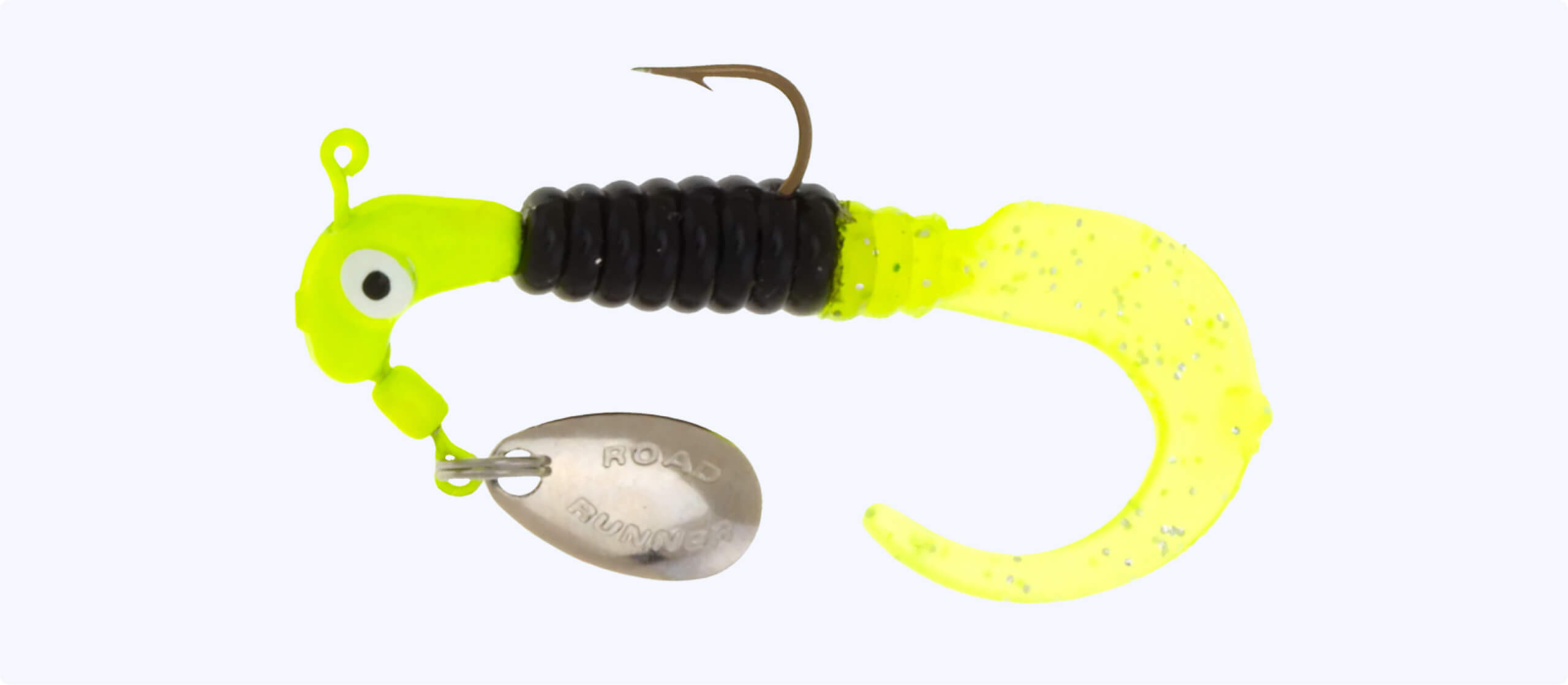
Why We Chose It: Spinners mimic minnows with their vibration, flash, and motion to attract the attention of nearby crappies.
How to Use This: Retrieve the spinner with an up-and-down 'yo-yo' motion or buzz it along the surface and allow it to fall or 'die' right beside fish-concentrating structures like stumps or fallen and standing timber.
Key Features:
- Curly tail made of soft plastic provides a rippling effect
- Underspin blades create flash and vibration
- Pre Rigged with a single hook
- Weighs 1/16 ounce
Best Crappie Crankbaits: Strike King Pro-Model 3XD Series Crankbait
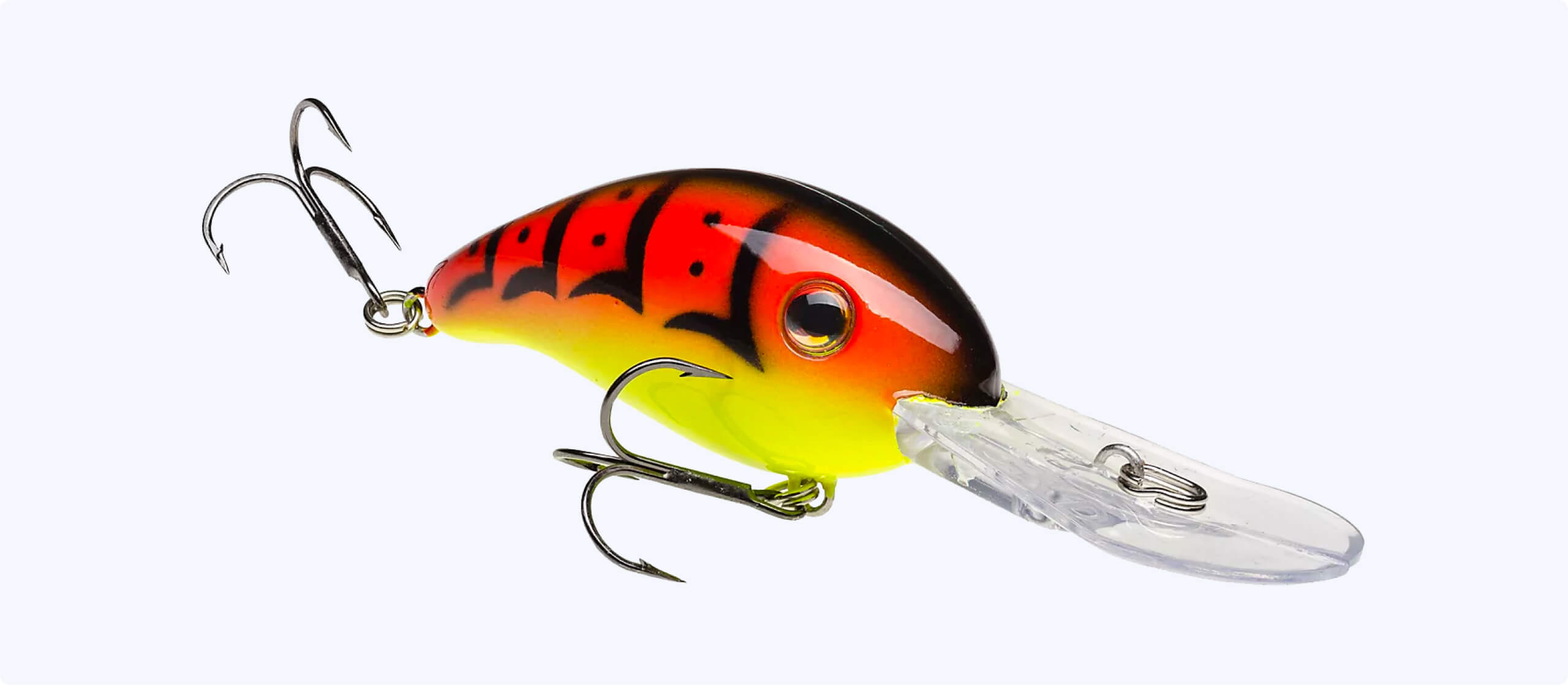
Why We Chose It: The small body and 3D eyes provide a realistic appearance. The curved bill allows the bait to dive up to 11 feet deep.
How to Use This: Best when the water is muddy or dark. First, use your electronics to find schools of crappie. Next, use a 2-inch medium diving crankbait to troll through the school of fish.
Key Features:
- Curved bill allows the bait to dive deep and track well
- Size 6 treble hook
- Weighs 3/8 ounce, 2 inches long
Best Crappie Soft Plastic: Bobby Garland Slab Slay'R Soft Baits
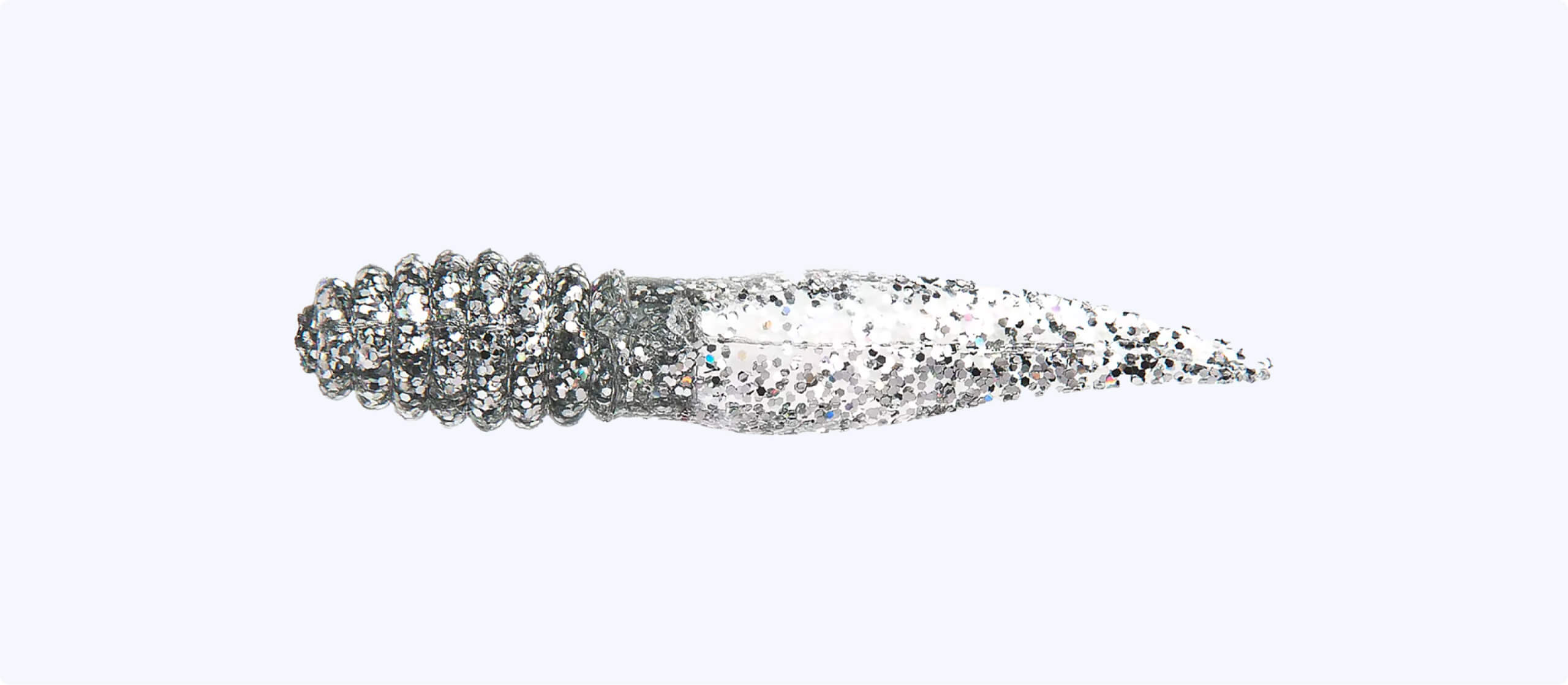
Why We Chose It: These soft plastic baits feature realistic appearances that you can match to fit the prey in the waters you're fishing.
How to Use This: When the fish are more aggressive near brush piles and other structures, it's best to cast past your target and then retrieve a 1/16-ounce jig with a soft plastic body over the top of the brush pile.
Key Features:
- Unrigged plastic swimbaits
- Solid, thin bodies with spear-shaped tails attract crappie in freshwater areas
- 2 inches long, includes 12 baits
Best Crappie Scented Bait: Berkley® Biodegradable Crappie Nibbles
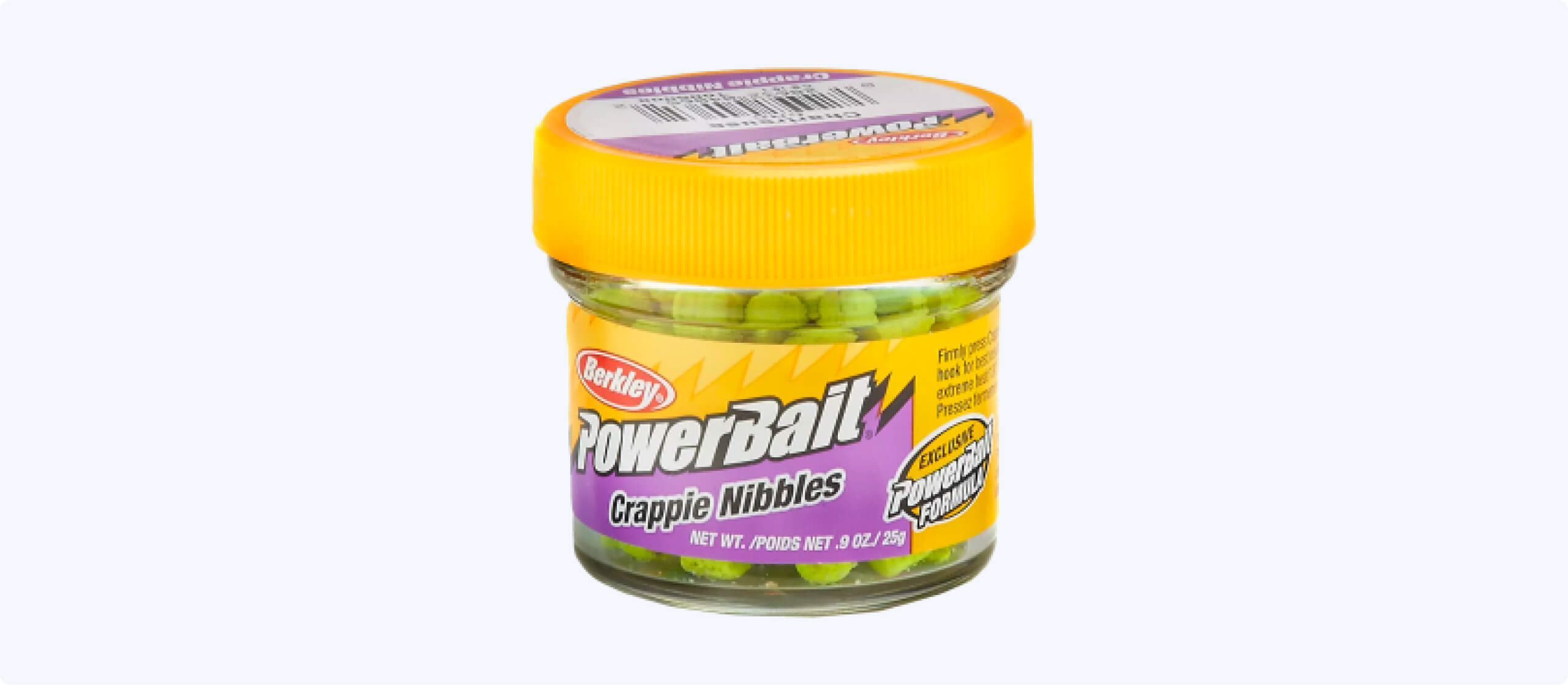
Why We Chose It: Scented baits are extra helpful in attracting crappies by releasing an appetizing scent that they can't resist.
How to Use This: Pair scented baits with your favorite presentation by either sliding them onto the hook point or pushing them up inside your tube bait or soft plastic grub to add a scent cloud around your lure.
Key Features:
- Creates a scent cloud to attract crappie by dissolving slowly in water
- Biodegradable design is environmentally friendly
- 0.9 ounce
Crappie Bait by Season
Crappies' behavior patterns change significantly with different water temperatures and conditions. Always do some research about the water temperatures you can expect from your intended fishing spot. That way, you'll know what types of bait and lures to bring along.
| Seasonal Crappie Bait Guide | ||||
|---|---|---|---|---|
| Season | Best Months To Fish | Best Bait To Use | Typical Fish Behavior | |
| Spring | Mid-March to mid-May | Live bait like minnows, soft plastics | Aggressive, spawning time | |
| Summer | July and August | Jigs and tube baits | Scattered, aggressive | |
| Fall | October to mid-November | Artificial lures like jigs and spoons, live bait | Hungry, feeding heavily for winter | |
| Winter | December and January | Soft plastics, jigs, spoons | Slower metabolisms, in deeper water | |
Crappie Fishing in Spring
Spring is one of the most popular times to fish for crappie! They often dwell in shallower water around brush and stumps. Much to the benefit of beginner crappie anglers, they are fairly easy to locate. Using live bait under a float is successful in spring when crappies are shallow and hungry.
Expert Tip:
Crappies spawn in the spring when water temperatures increase to around 60°F — though this temperature differs depending on what state you're in.
Crappie Fishing in Summer
While summer is by no means a bad time to fish crappies, you may find it more challenging. They'll usually scatter around the water in different depths near weed lines and structures. You may have to cover a lot of water to find them.
Expert Tip:
Artificial baits like crankbaits, jointed plugs, and tube baits work successfully in summertime. Live bait is also a dependable option for summer angling.
Crappie Fishing in Fall
Fall is a fantastic time to get back to fishing crappie! They feed primarily to prepare for winter. As fall continues, crappies migrate to the deeper areas of the water and to deep basins where it's warmer.
Expert Tip:
Live bait is a suitable option, but artificial lures that mimic food like spoons and spinners are often successful. Using jigs is another successful tactic for fall crappie fishing.
Crappie Fishing in Winter
Advanced anglers find the best success when it comes to winter crappie fishing. To get to the fish, you'll often have to fish through the ice. You'll find crappies in deeper water along weed lines and in the basin during colder months.
But the good news is that they still have to eat when the temperatures are cold! The trick is to present your lure slower and deeper. Artificial lures like jigs, swimbaits, and spoons tend to have the best success in winter.
Expert Tip:
During winter, fish in the afternoon when it's warmest out. Crappies like warmer water temperatures during the winter.
White Crappie vs Black Crappie
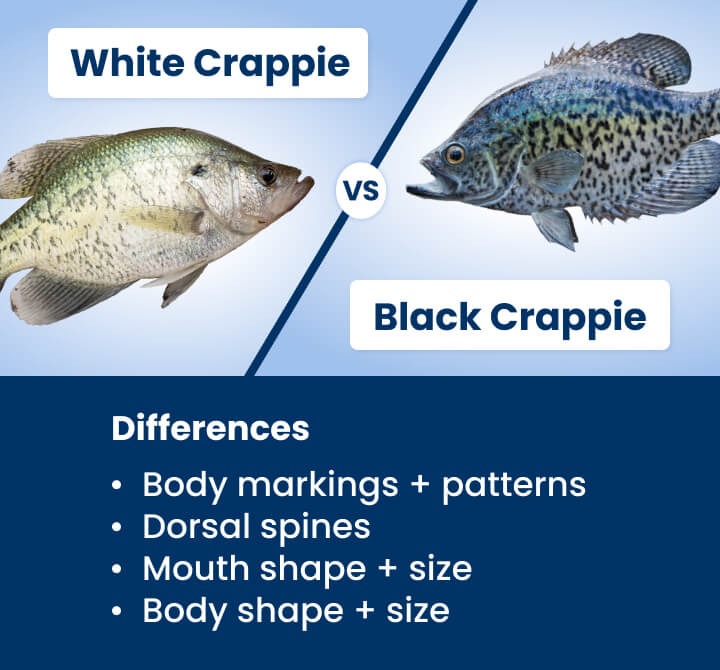
When you're out on the water, you should know how to discern whether you've caught a white or black crappie. Despite what you may initially think, their names don't always match what their names suggest.
However, there are a few easy ways to distinguish between a white crappie versus a black crappie:
| White vs Black Crappies Guide | |||||
|---|---|---|---|---|---|
| Characteristics | Mature Black Crappie | Mature White Crappie | |||
| Body Markings | Black specks without a pattern | Vertical stripes along the body | |||
| Dorsal Fins | 7 to 8 fins | 5 to 6 fins | |||
| Mouth Shape & Size | Smaller mouths that are angled upwards | Larger mouths, not angled up | |||
| Body Shape & Size | Compact size; more stubby | Longer and more slender bodies | |||
| Typical Weight & Length |
|
|
|||
| What Food They Eat/Best Bait | Insects, crustaceans, baitfish (like minnows or shad) | Minnows, insects | |||
| Best Artificial Lures | Crankbaits, jigs | Crankbaits, jigs | |||
| When They Feed | Early morning; Midnight to 2 AM | Evening and early morning | |||
Other Types of Crappie
- Black-Nosed Crappie: A type of black crappie with a recessive gene that causes a black stripe from the lips to the dorsal fin
- Golden Crappie: The rarest of the crappie species; has a golden color that is unique from other species
- Stock Hybrid Crappie: This crappie was produced in a lab with a male black-nosed black crappie and female white crappie
- Magnolia or Triploid Crappie: Also produced in a lab with a unique incubation process; created to stock in small areas where it's hard to maintain a healthy crappie population
- Natural Hybrid Crappie: Naturally created throughout the country between different species of crappie; also very rare
Have Fun Out There!
You're ready to head out for some crappie fishing! Stock up on our expert anglers' favorite baits and lures so you catch all the crappies you want. These can stick with you as a staple lure in your tackle box.
Looking for even more expert insights on the best baits and lures for other popular fish? Read our other guides:
- Looking to catch a prized hawg? Learn all about the best baits and lures for bass!
- Want to brush up on walleyes? Use these best baits and lures before you head out.
- Excited for a tasty challenge? Catch your next catfish with these best baits and lures.
- Bring home the biggest red drum of the day! Use these best baits and lures for redfish.
- Cast out the right tackle for your next striper. Learn all about the best striped bass baits and lures.
- Ready to catch your next rainbow trout? Don’t forget these best baits and lures!
- Looking to stock your lake trout tackle box? You can’t miss these best baits and lures.


